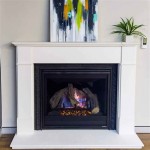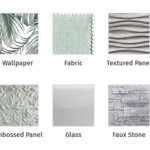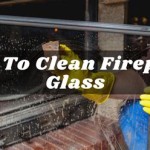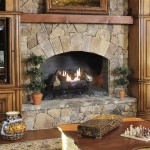Hearth for Fireplace: Construction, Function, and Materials
The hearth is a fundamental component of any fireplace system, serving as both a functional and aesthetic element. Its primary role is to provide a non-combustible surface that protects the floor and surrounding structures from the heat and potential dangers of open flames. Understanding the construction, function, and appropriate materials for a hearth is essential for ensuring the safe and efficient operation of a fireplace.
The term "hearth" commonly refers to two distinct parts of the fireplace assembly: the inner hearth and the outer hearth. The inner hearth, also known as the firebox floor, is the area directly exposed to the fire. The outer hearth, or front hearth, extends outward from the fireplace opening and serves as a buffer zone. Both sections are crucial for fire safety and should adhere to building codes and industry best practices.
Inner Hearth Construction and Materials
The inner hearth is the foundation upon which the fire is built, and therefore must withstand extremely high temperatures. Its construction requires robust, fire-resistant materials and careful attention to detail. Traditionally, brick was the material of choice for inner hearths, owing to its inherent fire resistance and ability to retain and radiate heat. Firebrick, a specialized type of brick manufactured to withstand temperatures exceeding 2000°F (1093°C), is the preferred material for this application. Firebrick is denser and less porous than standard brick, offering superior thermal resistance and durability.
Installation of the inner hearth typically involves laying firebrick with a refractory mortar, a type of mortar specifically designed to withstand high temperatures without cracking or crumbling. The mortar joints between the bricks should be as thin as possible to minimize heat transfer and prevent gaps through which embers could escape. Proper bonding of the bricks with the refractory mortar is critical for the structural integrity of the inner hearth.
When constructing or rebuilding an inner hearth, it is crucial to ensure proper ventilation underneath the firebox. This ventilation helps to regulate the temperature and prevent overheating, which can lead to cracking and deterioration of the hearth materials. A well-ventilated inner hearth also promotes better combustion efficiency by providing a steady supply of oxygen to the fire.
Alternatives to traditional firebrick for inner hearth construction include castable refractory cements. These cements are mixed with water to create a pourable mixture that can be molded to specific shapes and sizes. Once cured, castable refractory cements provide a seamless, highly heat-resistant surface. They are particularly useful for repairing damaged inner hearths or creating custom firebox designs.
Outer Hearth Dimensions and Requirements
The outer hearth, also sometimes called the front hearth or landing, extends outward from the fireplace opening and is designed to catch falling embers and prevent them from igniting combustible flooring materials. Building codes typically specify minimum dimensions for the outer hearth to ensure adequate protection. These dimensions vary depending on the size of the fireplace opening, but generally require the hearth to extend at least 16 inches (406 mm) in front of the fireplace and 8 inches (203 mm) on each side.
The dimensions of the outer hearth are critical to fire safety. An insufficient outer hearth can significantly increase the risk of a fire spreading beyond the fireplace area. It is essential to consult local building codes and regulations to determine the specific requirements for outer hearth dimensions in a given location.
Materials used for the outer hearth should be non-combustible and heat-resistant. Common choices include brick, stone, tile, and concrete. The selected material should be durable and able to withstand the wear and tear of foot traffic and occasional contact with hot embers. The outer hearth should be level and securely attached to the subfloor to prevent tripping hazards.
When installing the outer hearth, it is important to consider the surrounding flooring materials. If combustible flooring, such as wood or carpet, is adjacent to the hearth, a non-combustible transition strip should be used to create a fire barrier. This strip prevents flames from spreading from the hearth to the surrounding flooring.
Material Selection Considerations: Heat Resistance, Durability, and Aesthetics
Choosing the right materials for both the inner and outer hearth is a balance between functionality, durability, and aesthetic appeal. While heat resistance is the most critical factor, the overall longevity and visual integration with the fireplace and surrounding room are also important considerations.
For heat resistance, firebrick and refractory cement are the top choices for the inner hearth. These materials offer exceptional performance in extreme heat environments. When selecting firebrick, it's important to check the American Society for Testing and Materials (ASTM) rating to ensure it meets the specific temperature requirements of the fireplace. Refractory cements come in various grades and formulations, so choosing the appropriate product for the intended application is essential. Consider the maximum temperature the cement can withstand and its resistance to thermal shock.
For durability, natural stone, such as granite or slate, is an excellent option for the outer hearth. Stone is incredibly durable and resistant to scratches, stains, and wear. It can also withstand high temperatures without cracking or warping. Concrete is another durable choice, especially when reinforced with steel or fiber. Properly sealed concrete can be resistant to staining and weathering. Brick offers a classic and durable option for the outer hearth, but it's essential to choose brick that is suitable for outdoor use if the fireplace is located outdoors.
Aesthetic considerations play a significant role in material selection. The hearth should complement the style of the fireplace and the surrounding room. Brick offers a traditional and rustic look, while stone provides a more elegant and natural appearance. Tile offers a wide range of colors and patterns, allowing for greater design flexibility. Concrete can be stained or stamped to create a variety of textures and finishes. When choosing materials, consider the color, texture, and pattern of the hearth and how it will integrate with the overall design of the space. The texture of the surface should also be considered – a rough texture may be safer to walk on than a smooth, polished surface.
Maintenance of the hearth is also an important consideration. Regularly cleaning the hearth will help to prevent the buildup of soot and ash, which can stain the surface and reduce its aesthetic appeal. Depending on the material, the hearth may need to be sealed periodically to protect it from moisture and staining. Inspecting the hearth regularly for cracks or damage will help to ensure its long-term durability and safety. Promptly repairing any damage will prevent it from worsening and potentially compromising the integrity of the hearth.
In summary, the hearth is a critical component of a safe and functional fireplace. Proper construction, using appropriate fire-resistant materials, and adhering to building codes are essential for ensuring the protection of the surrounding structure and preventing fires. Careful consideration of heat resistance, durability, and aesthetic appeal will result in a hearth that is both functional and visually appealing.

What Is A Fireplace Hearth Detailed Guide To Hearths

ᑕ❶ᑐ What Is A Fireplace Hearth And Its Purpose

Colonial Fireplace Hearth By Necessories Patio Outdoor Furnishings

Vanbrugh Fireplace Without Mid Mantel No Slip Rebates Including Hearth Haddonstone Usa

What Is A Fireplace Hearth

Pleasant Hearth Universal Radiant Zero Clearance 36 In Ventless Dual Fuel Fireplace Insert Phzc36f The Home Depot

Conrad Cast Stone Fireplace Mantel Old World Stoneworks

What Is A Fireplace Hearth Detailed Guide To Hearths

Heat Glo Royal Hearth Wood Fireplace Fireside Home

Dk Studio
Related Posts








